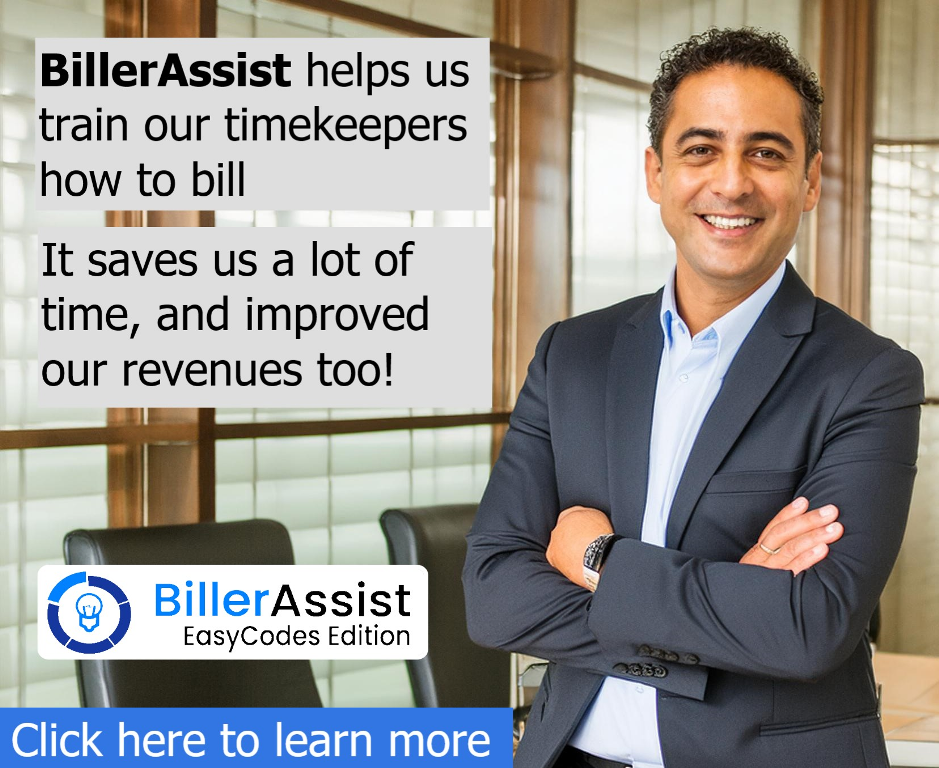Improve Realization and Collection Rates Using AI-Assisted Billing
The recent financial turmoil made many people gun-shy about excessive expenditures. One of the many industries hit by this heightened interest in cost control measures was the legal field.
Clients began taking a closer look at their legal invoices. This mindset has prevailed even past the economic improvements of the subsequent years.
As such, many law firms continue to see decreases in their realization and collection rates.
Prior to the recent financial turmoil, realization rates (i.e., the difference between the time that is logged and the time that is actually billed) and collection rates (i.e., the difference between the time that is billed and the time that is actually paid) have still traditionally both stayed in the 90% to 95% percent range.
However, a recent Georgetown University Law Center and Peer Monitor report showed that realization and collection rates at larger firms have deteriorated down to around 85%.
Along those same lines for smaller law firms, Clio found in their recent Legal Trends Report that 31% of clients feel that even average prices for legal services are too high. The Clio survey also showed that over a third of the consumers polled believe that legal services are not worth the current price point.
Similarly, a survey by Altman Weil revealed another alarming symptom of the more cost control conscious client pool. Many companies with the means to do so are building up their own in-house legal teams and forgoing outside counsel altogether. The survey found that “[m]ore than 85% of law firms finding that their strongest competition is coming from their clients.”
Law firms are starting to feel the pressure of these realities. Fortunately, billing and practice management software systems, combined with the data-driven approaches they help allow for, are filling this significant need. These applications provide cost-effective ways to increase efficiency and with it, profitability.
How Much Does The Client Actually Pay?
If there’s one solution that is unquestionably not the right answer, it’s simply raising prices. Trying to increase revenues and profits lost from poor collection and realization rates has two major problems.
Problem one is that it just plain doesn’t work. Clients have become savvier and are unwilling to put up with being what some might consider to be “gouged.”
In fact, in other industries, if the problem is that the buyer thinks a product or service is too expensive, merely raising the price is the worst possible solution.
Problem two is that it invites great scrutiny with regard to billing. That is, if realization and collection rates were already decreasing when hourly rates were lower, increasing the hourly rate could easily be offset with even lower realization and collection rates. This is an old adage known to many attorneys that questions, “OK, the hourly rate is over $1,500 per hour, but how much of that work does the client actually pay?”
The adage is born out in the evidence. Billing rates have increased fairly steadily over the last 10 years, but as previously noted, with the higher rates came even lower realization and collection rates. More specifically, overall collection and realization rates in 2018 still hovered around only 84% — well below the historical averages, while overall hourly rate increases in 2018 were in the range of 3% to 4%, — not enough to offset the drop in realization and collection rates.
In this challenging environment, the best way to increase profitability comes from eliminating non-billable time and maximizing the allocation of resources.
Capture Your Time Automatically
The way a firm records their time is of the utmost importance. The legal field is one where the adage “time is money” is especially salient.
The results of a recent LexisNexis survey found that of the 450 small firms claimed to miss out on as much as 40% of their billable time because of inadequate time-tracking measures. Even more troubling, Clio’s recent Legal Trends Report revealed that most attorneys can only dedicate about 2.4 hours to billable tasks.
Accuracy and efficiency are still the hallmarks of proper billing. The American Bar Association offers these 5 recommendations to help maintain efficient billing and timekeeping practices:
- Be descriptive
- Avoid block billing
- Proofread time entries
- Track and enter your time daily
- Record all your time
In practice however, this can be easier said than done.
To address the difficulties in logging time, numerous “passive timekeeping” applications have been created to help provide a more automated billing process.
These billing applications relieve attorneys of the clerical burden of creating time entries, and instead generate time entries from the attorney’s work as it is being done. Moreover, because these billing applications function online, they allow a firm’s timekeepers to use the apps in real-time anywhere they can get a signal.
However, as with anything else, even the best tool can be useless if not implemented properly.
Data Driven Solutions
What does “data driven” mean? The answer is simple, data-driven solutions entail making decisions based on your previous performance data. If the data shows something works, keep doing it. If the data suggest something is weighing you down, get rid of it or at least improve the process.
More specifically for law firms, analyzing past billing and performance data can help guide a firm in the direction of using resources and work-hours more efficiently. If too much time or money is being expended on tasks that don’t provide the proper returns, data-driven solutions would suggest rethinking those practices. This can also be applied to realization and collection trends.
A recent Industry Outlook report produced by Major, Lindsey & Africa notes, “more firms using analytics to predict trends and measure practice development by applying advanced analytical tools to their own billing and financial information.”
In fact, many larger firms are cutting out the middle man and developing software to fit their custom and specific needs.
But law firms small and large don’t need to design and build their own software to take advantage of data aggregation technology.
Venture capital funding in the automation and machine learning space has more than tripled in recent years. Many of the new applications allow law firms to optimize and improve their operational efficiencies.
For example, law firm billing and practice management provider Clio recently released a new dashboard to help law firms track “how much billable work you’re doing, how much of that work gets billed, and how much of those invoices get collected on.”
Moreover, other applications make use of Artificial Intelligence (AI) and machine learning to automate UTBMS/LEDES coding, prevent write-downs and write-offs before they happen, help timekeepers comply with Outside Counsel Guidelines in real time, and standardize law firm billing data for better analysis.
Speed Up Payments
Clients are not unwilling to pay reasonable fees. What they want is to know that they are not getting cheated. One of the easiest ways to soothe their worried minds is to maintain transparency and promote easy payment methods. Many other industries have been implementing such practices for decades, and clients are coming to expect them of the legal sector as well.
We’re not talking about revolutionary changes. Over 30% of clients say they would prefer to pay their legal bills online or electronically, while 26% would like to have the ability to keep track of the number of hours their attorneys are working online before their invoices arrive.
Smaller firms have reported payments coming in as much as 39% quicker when they allow for the use of payment by credit card. For large firms, “same-day ACH” payments are becoming more popular, and can also significantly improve cash flows.
Online or other electronic payment solutions, in particular, can be just as beneficial for the law firm as it is for the client.
Conclusion
Raising prices to offset losses in realization and collection rates is an endeavor that is doomed to fail. Instead, law firms should consider new billing applications that are designed to make the billing and payment processes easier and faster.
However, this is only their primary function. When used properly, the new applications can give you insights on how to make better law firm management decisions in the future. Using these new technologies to implement and maintain data-driven solutions is the much smarter play.





